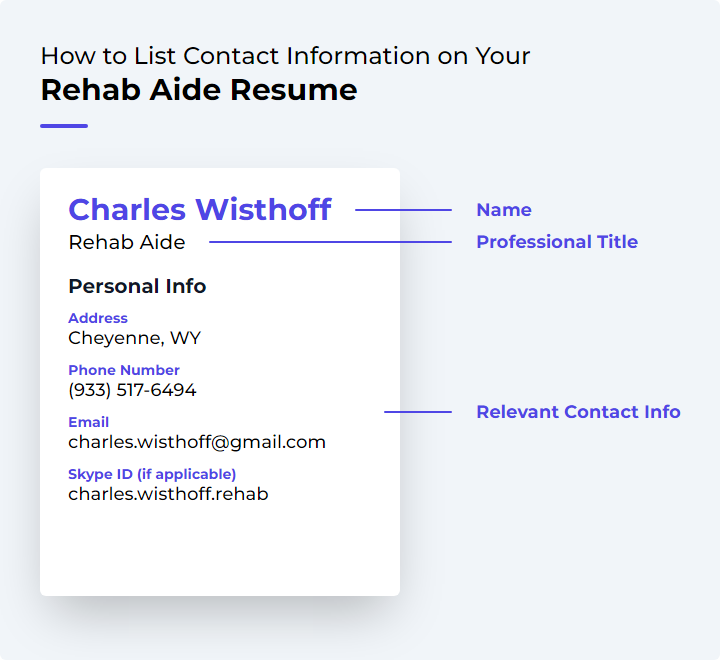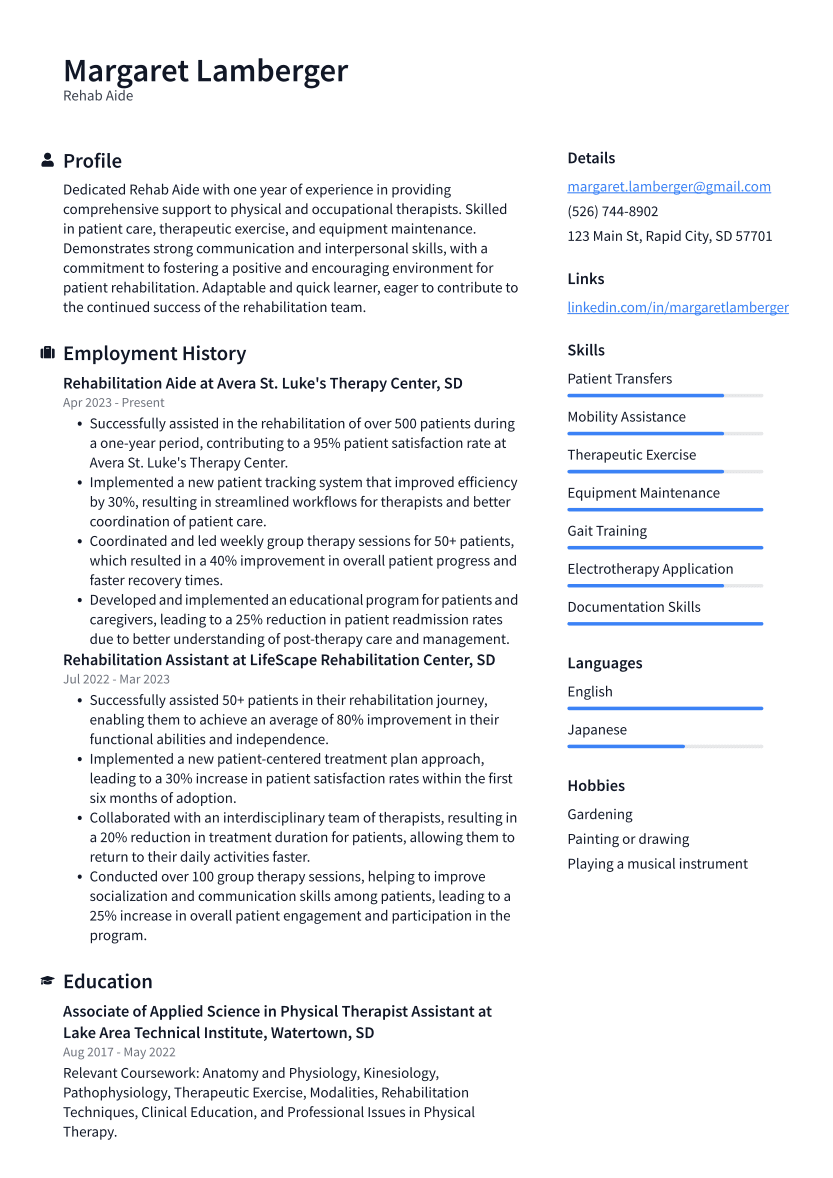Rehab Aide Resume Examples
Writing a great rehab aide resume is important because it is one of the first things a potential employer will see when they are considering you for a position. It is your opportunity to make a good first impression and sell yourself as the best candidate for the job.
Create your resume
Select from 7 professional resume templates
If you're looking for inspiration when it comes to drafting your own rehab aide resume, look no further than the samples below. These resumes will help you highlight your experience and qualifications in the most effective way possible, giving you the best chance of landing the rehab aide job you're after.
Essential Components of a Rehab Aide Resume
A Rehab Aide resume is a crucial document that showcases your capabilities, experiences, and credentials in the rehabilitation field. It serves as an introduction to potential employers, highlighting your potential contributions to a team of physical therapists, occupational therapists, and other healthcare professionals in patient care.
Your resume should be meticulously crafted to include key sections such as a professional summary, skills section, employment history, educational background, and more. The following segments will delve into the specifics of these resume components, their significance, and what to include in them, along with tips to make your resume stand out as a Rehab Aide.
1. Contact Information
At the top of your resume, ensure your contact information is visible and accessible, allowing prospective employers to contact you for further discussions or interviews.

Include your full name, phone number, and a professional email address. If applicable, add your LinkedIn profile or other professional online presences, ensuring they are current and reflect your professionalism.
While your home address is optional, it can be beneficial to include if relocation is pertinent to the job or if you're applying from out of state.
- Full Name
- Phone Number
- Email Address (Professional)
- LinkedIn Profile (Optional)
- Home Address (Optional)
Double-check your contact information for accuracy to avoid missed opportunities due to incorrect details.
2. Objective Statement
The objective statement is a concise and impactful section that conveys your professional identity, career aspirations, and the value you aim to bring to a potential employer's team.
An effective objective statement for a Rehab Aide should emphasize your dedication to patient rehabilitation and highlight the skills and qualifications that make you suitable for the role. For instance:
"Committed and experienced Rehab Aide with over 5 years of excellence in patient care, seeking to contribute my expertise to a dynamic rehabilitation team, with a focus on supporting patients in regaining mobility and independence."
Customize your objective statement for each application, incorporating relevant keywords from the job posting to enhance your chances of passing through automated screening systems and capturing the hiring manager's attention.
Related: Top Rehab Aide Resume Objective Examples
3. Education and Certifications
A high school diploma or equivalent is typically required for rehab aide positions, but additional education in healthcare can be advantageous. List any relevant certificates, degrees, or special training, and highlight ongoing professional development to demonstrate your commitment to staying current in the field.
Related: Rehab Aide Certifications
4. Relevant Work Experience
Detail your work history, focusing on roles that involved patient care, rehabilitation services, or similar responsibilities. Use action words and quantify achievements where possible to illustrate your suitability for a Rehab Aide position.
5. Skills and Competencies
Showcase a mix of technical and soft skills relevant to the Rehab Aide role. Provide concrete examples of how you've applied these skills in practice to strengthen your resume.
Related: Rehab Aide Skills: Definition and Examples
6. References
Include references who can attest to your patient care abilities, communication skills, and reliability. Ensure you have their consent before listing them and keep them informed about potential employer inquiries.
7. Professional Affiliations or Memberships
Membership in professional organizations like the APTA, NRA, or AOTA can enhance your resume by demonstrating your engagement with the field and commitment to professional growth.
- Ensure that any affiliations listed are relevant to your role as a Rehab Aide and be prepared to discuss how they have contributed to your professional development.
